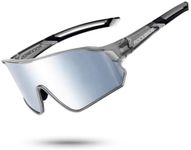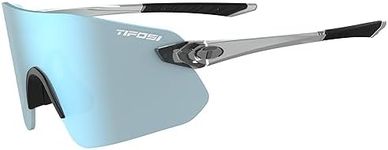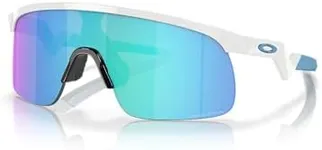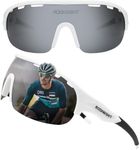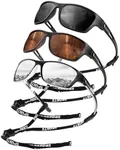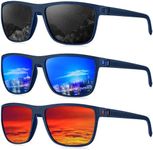Buying Guide for the Best Cycling Sunglasses
Choosing the right cycling sunglasses is crucial for both performance and safety. The right pair will protect your eyes from harmful UV rays, debris, and wind, while also enhancing your vision and comfort during rides. When selecting cycling sunglasses, consider the following key specifications to ensure you find the best fit for your needs.Lens MaterialThe lens material affects the durability, weight, and clarity of the sunglasses. Common materials include polycarbonate, which is lightweight and impact-resistant, and NXT, which offers superior optical clarity and durability. If you prioritize safety and lightweight, go for polycarbonate. For the best visual experience, NXT lenses are ideal.
UV ProtectionUV protection is essential to shield your eyes from harmful ultraviolet rays. Look for sunglasses that offer 100% UV protection. This is non-negotiable as it prevents long-term eye damage. Ensure the sunglasses explicitly state they block 100% of UVA and UVB rays.
Lens TintLens tint affects how much light reaches your eyes and can enhance contrast and depth perception. Darker tints like gray and brown are suitable for bright conditions, while lighter tints like yellow and rose are better for low-light or overcast conditions. Choose a tint based on the typical lighting conditions you ride in.
Interchangeable LensesSome sunglasses come with interchangeable lenses, allowing you to switch tints based on the riding conditions. This feature is useful if you ride in varying light conditions. If you need versatility, opt for sunglasses with this feature and ensure they come with multiple lens options.
Fit and ComfortA good fit ensures the sunglasses stay in place and are comfortable during long rides. Look for adjustable nose pads and temple arms to customize the fit. Try on different styles to find one that fits snugly without causing pressure points.
VentilationProper ventilation prevents fogging and keeps your vision clear. Sunglasses with vented lenses or frames allow air to flow through, reducing the chance of fogging. If you ride in humid conditions or sweat a lot, prioritize sunglasses with good ventilation.
PolarizationPolarized lenses reduce glare from reflective surfaces like water or wet roads, enhancing visual clarity and reducing eye strain. If you often ride in bright, reflective environments, polarized lenses can be very beneficial. However, they can make it harder to read digital screens, so consider your specific needs.
Frame MaterialThe frame material affects the weight, durability, and flexibility of the sunglasses. Common materials include plastic, which is lightweight and affordable, and nylon, which is more durable and flexible. Choose a frame material based on your preference for weight and durability.
